
Apple Announces Q2 Fiscal Year 2016 Results: iPhone Sales Slowed But Services Gain
This afternoon, Apple released their Q2 earnings for fiscal year 2016, which ended on March 26. The company saw revenues decline for the first time since Q1 2003, according to CNN. The results today did not meet expectations, but that was quite a run to go over 13 years without a year-over-year decline in revenue. Revenue for the quarter was $50.56 billion, which is 10% lower than the $58.01 billion announced a year ago. Gross margin was $19.9 billion, or 39.4%, which was down from the 40.8% gross margin in Q2 2015. Net income was down 22.5% as well, coming in at $10.5 billion for the quarter. This resulted in earnings per share of $1.90, down from $2.33 a year ago.
| Apple Q2 2016 Financial Results (GAAP) | |||||
| Q2'2016 | Q1'2015 | Q2'2015 | |||
| Revenue (in Billions USD) | $50.557 | $75.872 | $58.010 | ||
| Gross Margin (in Billions USD) | $19.921 | $30.423 | $23.656 | ||
| Operating Income (in Billions USD) | $13.987 | $24.171 | $18.278 | ||
| Net Income (in Billions USD) | $10.516 | $18.361 | $13.569 | ||
| Margins | 39.4% | 40.1% | 40.8% | ||
| Earnings per Share (in USD) | $1.90 | $3.30 | $2.33 | ||
iPhone sales have certainly slowed, but Apple was almost destined to falter after reporting such strong quarters a year ago. The launch of the larger iPhone 6 and 6 Plus triggered year-over-year growth in iPhone sales of 40% a year ago, and 46% growth the quarter before that. Strong growth in China helped fuel a lot of that gain, since it was practically an untapped market for Apple, but revenue from China fell 26% from a year ago. With Apple being a company that has struggled to expand it’s market outside of iPhone, when the one segment falters it can make a big impact on the results, which is exactly what happened here.
Pretty much every earnings report, sales of the iPhone dominate the discussion, and today is not really any different. Apple sold 51.2 million iPhones this quarter, which is a drop of 16% year-over-year. That brought in revenue of $32.86 billion for the quarter, which is a drop of 18% year-over-year. A larger revenue drop than unit sales means that of the iPhones it is selling, the average selling price is also down. Apple still gets 65% of its revenue from the iPhone, even on a down quarter, but the other segments are not pulling up the slack.
iPad sales continue their downward trajectory, with sales of 10.251 million units this quarter, which is down 19% from a year ago. Revenue for the iPad was $4.4 billion, also down 19%. This has been a common trend with the iPad over the last year or two, and what originally looked to be another strong growth segment for Apple has quickly become a market where sales keep declining. Eventually they will bottom, but even with the solid new entries in the iPad Pro, the smaller iPad Pro 9.7, and even the new iPad Mini, the Apple tablet market has quickly reached a point where people are not upgrading as quickly as the iPhone market does, and you have to start to wonder when sales of the iPad are going to bottom out.
The PC market is certainly declining, but the Mac has soldiered on, generally outperforming the PC market even in the down times. That trend also stopped this quarter, with Mac sales down 12% year-over-year, to 4.0 million devices. Revenue for the Mac was $5.1 billion, which is down 12% compared to last year, meaning that Apple is also selling lower cost Macs than a year ago. We’ve not seen Apple refresh the Mac for some time though, with only the MacBook getting Skylake, so sales may be affected by this as well.
Services, which include internet services, AppleCare, Apple Pay, and others, are now the second largest revenue source for Apple, with revenues up this quarter 20% over last year, for a total of just a hair under $6 billion for the quarter. Even compared to the holiday quarter, which was Q1, sales were pretty much flat, and all of the other segments dropped significantly (and expectedly) compared to last quarter. You likely don’t think of Apple as a services company, but iTunes sales, Apple Music, and their other services are now the number two product at Apple, and that’s pretty surprising. It may not be number two next quarter, but with Apple having over a billion people using their services now, sales here should stay strong.
The final segment from Apple is “Other Products” which includes Apple Watch, Apple TV, iPod, Beats, and accessories. This segment also grew significantly year-over-year, to $2.2 billion, which is up 30%. Although Apple doesn’t break down the products inside here, the addition of Apple Watch likely makes up a good portion of this, since it wasn’t part of the category a year ago.
| Apple Q2 2016 Device Sales (thousands) | |||||
| Q2'2016 | Q1'2016 | Q2'2015 | Seq Change | Year/Year Change | |
| iPhone | 51,193 | 74,779 | 61,170 | -32% | -16% |
| iPad | 10,251 | 16,122 | 12,623 | -36% | -19% |
| Mac | 4,034 | 5,312 | 4,563 | -24% | -12% |
Apple announced they were going to be adding an additional $50 billion to their capital return program, bringing the program up to $250 billion in cash returned to shareholders by the end of March 2018. The dividend will be increased to $0.57 per share, and they will buy back $175 billion in shares, up from the original goal of $140 billion in shares.
They also announced guidance for the next quarter, where they expect revenue between $41 and $43 billion (Q3 2015 revenue was $49.6 billion) and gross margin is expected to drop again to between 37.5 and 38%. With this guidance, next quarter may be very similar to this one.
| Apple Q2 2016 Revenue by Product (billions) | |||||
| Q2'2016 | Q1'2016 | Q2'2015 | Revenue for current quarter | ||
| iPhone | $32.857 | $51.635 | $40.282 | 65.0% | |
| iPad | $4.413 | $7.084 | $5.428 | 8.7% | |
| Mac | $5.107 | $6.746 | $5.615 | 10.1% | |
| iTunes/Software/Services | $5.991 | $6.056 | $4.996 | 11.8% | |
| Other Products | $2.189 | $4.351 | $1.689 | 4.3% | |
I don't think we have to worry about Apple going bankrupt just yet, but today’s earnings are a big change in what we’ve gotten used to in the last 13 years or so. All things must come to an end, and today it was Apple’s amazing track record over the last decade or more. They are certainly not alone in having their struggles this quarter, but the drop is pretty significant nonetheless.
Source: Apple Investor Relations
Read More ...
Intel Proposes to Use USB Type-C Digital Audio Technology
USB Type-C has a number of chances to become the standard for data and charging connector for smartphones and tablets running either Android or Windows. However, in the long-term future, Intel wants USB-C to be even more universal (and therefore pervasive) than it is going to be, which is why at IDF Shenzhen part of one of the talks evolved around using Type-C for audio.
Audio receptacles on PCs and mobile equipment are virtually the last remaining analog interfaces of modern devices, requiring certain techniques to maintain a high audio quality and remove interference. Intel proposes to replace things like 3.5 mm mini-jack with USB Type-C which will help to add features to headsets and will simplify connections of multi-channel audio equipment to various gadgets. This is not the first time a company has proposed to replace analog audio on PCs and mobile devices, but so far, nobody has succeeded due to the ubiquity of 3.5mm. Since the industry may still not be ready to go all-digital, there seems to be a backup plan.
Various types of audio jacks to connect headphones to audio equipment have been around for decades. For example, the original 6.35 mm connector, which is still widely used by audio equipment, was invented in 1878. Meanwhile, two-conductor miniature 3.5 mm audio connector (which is the most widely used audio connector at present) has been around since 1960s. Headphone jacks have evolved; they have gained contacts to support microphones and even basic programmable capabilities to enable remote controls. However, fundamentally, the ability to listen to audio through a speaker has remained the same for over a hundred years: completely analog and barely any smart functionality. Today's smartphones are used for all sorts of different purposes and are connected to a variety of devices, which requires sophisticated interconnection technologies with high data-rates. At the same time, as phones and devices get thinner, or even to simplify some of the internal design, it gets harder to install multiple ports for various purposes. If there were to be a universal connector that does it all, including audio, Intel and some other players want USB Type-C to be that universal connector.
In fact, USB-C can be used to transfer analog audio in accordance with the specification of the connector. It all comes down as to how that audio is transmitted.
The USB-C has sideband use pins (SBU1 and SBU2) which can be used for analog audio in audio adapter accessory mode. Use of the sideband pins should not impact data transfers and other vital functionality of USB-C cables, which should make them relatively simple from the engineering point of view. In this case, the USB-C connector will just replace the 3.5 mm mini jack and may even gain some additional features, such as a thermal sensor in an earpiece could measure temperature for fitness tracking.
The concept is not completely new and we saw it years ago - back in the 2000s, Motorola used the mini-USB connector on its feature phones to enable charging, data transfers and a headset connection. The idea to use one connector for everything was not entirely bad, however, it left users without a choice of headsets. However, if the makers of devices (as well as producers of audio listening equipment) adopt USB-C, the is potential that the problem will not occur again. In the advent of digital signal transfer, this allows the headset to drive the digital-to-analog conversion, removing electronic interference from the host and potentially offering a wide array of audio results.
However, transferring analog audio using USB-C’s SBU pins is not the only thing that Intel is working on.
At present, Intel is finalizing the USB Type-C Digital Audio technology and plans to release its specification later in Q2. The company does not reveal a lot about the standard right now, but notes that it is working on updating the USB Audio Device Class 2.0 specifications to support new connector, expand the list of recent audio specifications and features, improve power management and simplify the discovery and configuration model to make the upcoming headsets as easy to use as today’s headsets.
In fact, one of the important issues with streaming audio over USB is the synchronization of data streams from the host to the receiver. The USB Audio Device Class specification solved the problem in the past and because Intel mentioned the USB Audio Device Class 2.0 in its presentation at IDF, this may mean that the new the USB-C Digital Audio spec will rely on this synchronization mechanism as well. Intel wants its USB-S Digital Audio to be backward-compatible with USB Audio (1.0 and 2.0), but naturally plans to add support for new music formats.
Usage of digital audio means that headsets should gain their own amplifiers, DACs and various other logic, which is currently located inside smartphones. Intel proposes to install special multi-function processing units (MPUs), which will perform beam forming, noise suppression, acoustic echo suppression (AES), acoustic echo cancellation (AEC), non-linear processing and other operations. The MPUs will also support HDCP technology, hence, it will not be possible to make digital copies of records using USB-C digital headset outputs. It is unlikely that audio processing will be offloaded to external headsets completely, but the latter will clearly gain their own chips. This may, however, see a spike in cost, especially at the super-low end.
A good thing about USB Type-C headsets with MPUs is that they are going to be software upgradeable and could gain functionality over their lifespan. Intel admits that such MPUs will make digital headsets more expensive compared to analog devices, but high volumes and new process technologies will help to reduce the cost of digital headsets over time. In fact, USB Audio headsets and audio chips for them are not something completely new. For example, Plantronics Audio 655 DSP headset costs $49.99, whereas CMedia’s HS-100 chip for headsets is available $1. Therefore, from the cost perspective, digital headphones should not be too much more expensive in general. Meanwhile, Intel wants USB-C digital audio headsets to offer “significant value at higher end” and have improved functionality in a bid to become popular among consumers.
The industry has successfully replaced analog cables with HDMI for video equipment in the living room and in the coming years will retire the D-Sub interconnection for computer displays. However, audio jacks have survived multiple generations as other standards have changed. In fact, Intel itself eliminated analog audio jacks in its first-generation NUCs PCs, but had to return them in subsequent generations. With USB-C Digital Audio Intel may not be alone. Google’s Android 5.0 already supports USB DAC devices and thus digital headsets. Moreover, last week LeEco released several smartphones without audio jacks, so, there are attempts to eliminate them from mobile devices already. One maker will not make any difference, but a coordinated move by market leaders, such as Samsung, LG or HTC, could have a significant impact.
Read More ...
The Riotoro Prism CR1280 Case Review
In this review we are having our first encounter with Riotoro, a new manufacturer of PC cases and peripherals. The Prism CR1280 that we are putting to the test today is the world’s first RGB case, a very large tower primarily designed for advanced gaming systems.
Read More ...
AMD Releases Radeon Pro Duo: Dual Fiji, 350W, $1500
These recent years we have seen a slow but steady buildup of VR from both technological developments to growing enthusiasm shown by consumers and the industry. Today AMD is releasing the Radeon Pro Duo to the market as their first card targeted at VR developers. This card is not being directly aimed at gamers, despite the capability under the hood, but focuses on official support for professional software. Additionally, multiple initiatives are being both spearheaded and supported by AMD and others to encourage growth in the VR sector.
The AMD Radeon Pro Duo was first announced back in March, with the card is being marketed for VR content creation first and foremost. With this card, AMD is promoting the ability to allocate one GPU per eye while powering VR experiences. This way the case is opened up for performance beyond what any other single card can offer today. Another use case for developers is offloading compute work to the second GPU while the first is used for graphical work which can make for a much smoother experience during demanding a workflow.
Gaming is definitely possible on Radeon Pro Duo and alongside the FirePro drivers for content creators, Radeon drivers will be available. The Pro Duo will not see validation for as many applications as a true FirePro card, but official support will be provided for applications important to gaming content creation such as Autodesk, Maya, and Blackmagic Davinci Resolve.
| AMD GPU Specification Comparison | ||||||
| AMD Radeon Pro Duo | AMD Radeon R9 Fury X | AMD Radeon R9 Fury | AMD Radeon R9 295X2 | |||
| Stream Processors | 2 x 4096 | 4096 | 3584 | 2 x 2816 | ||
| Texture Units | 2 x 256 | 256 | 224 | 2 x 176 | ||
| ROPs | 2 x 64 | 64 | 64 | 2 x 64 | ||
| Boost Clock | 1000MHz | 1050MHz | 1000MHz | 1018MHz | ||
| Memory Clock | 1Gbps HBM | 1Gbps HBM | 1Gbps HBM | 5Gbps GDDR5 | ||
| Memory Bus Width | 2 x 4096-bit | 4096-bit | 4096-bit | 2 x 512-bit | ||
| VRAM | 2 x 4GB | 4GB | 4GB | 2 x 4GB | ||
| FP64 | 1/16 | 1/16 | 1/16 | 1/8 | ||
| TrueAudio | Y | Y | Y | Y | ||
| Transistor Count | 2 x 8.9B | 8.9B | 8.9B | 2 x 6.2B | ||
| Typical Board Power | 350W | 275W | 275W | 500W | ||
| Manufacturing Process | TSMC 28nm | TSMC 28nm | TSMC 28nm | TSMC 28nm | ||
| Architecture | GCN 1.2 | GCN 1.2 | GCN 1.2 | GCN 1.1 | ||
| GPU | Fiji | Fiji | Fiji | Hawaii | ||
| Launch Date | Q2 2016 | 06/24/2015 | 07/14/2015 | 04/21/2014 | ||
| Launch Price | $1499 | $649 | $549 | $1499 | ||
The Radeon Pro Duo is essentially and effectively two Radeon R9 Nanos together on a single PCB. At a high level, the Pro Duo should give us up to twice the performance at twice the power consumption (plus a bit extra for PCIe switches). To remove heat, the card comes with a closed loop cooler similar to that found on AMD’s Radeon R9 Fury X. This cooler, unlike the one found on the R9 295X2, provides a complete liquid cooling solution covering the VRMs on both GPUs along with the GPUs themselves. For reference, the pipes on this one are 540 mm long, and the double-thick radiator with fan comes in at 63 mm
Moving past the cooling solution we get three full sized DisplayPort connectors and one full-size HDMI port. On the side of the card there are three 8-pin PCIe power connectors which will do more than an adequate job of supplying the rated 350W power draw. Note that 350W is the equivalent of dual R9 Nano cards (rated at 175W a piece), and will be clocked similarly. The reactive frequency adjustments to heavily loading, by inference, are likely to be similar but we expect AMD to be using low-power binned parts for their new high-end card.
The Radeon Pro Duo is launching today at $1500, or three times the current price of the R9 Nano. That’s a $500 price premium to combine two cards into one. Even with the price, AMD is keen to admit that the Radeon Pro Duo is now the single fastest graphics card on the market since the competition doesn’t offer a similar product at this time. From our perspective at AnandTech, we still advise that users are better off investing in a single powerful GPU first, and only scaling out into SLI/CF when requirements for extreme performance are such that a single GPU solution cannot provide. With VR, it stands a good chance at pushing gaming machines harder than anything we’ve seen so far, especially when trying to maintain a smooth and low latency experience. It all depends on the workflow and subsequent frame rendering methods used.
Alongside all of this news and information is renewed attention for several initiatives AMD is taking part in. AMD has placed the Radeon Pro Duo as the first card in their AMD VR Ready Creator Line. The goal being that the Pro Duo, coupled with Liquid VR, will create a powerful and capable platform to develop future VR experiences. The AMD VR Ready Creator Line is also the platform of choice for Crytek’s VR First initiative, which intends to foster growth in the VR industry by supporting developers by powering virtual reality labs in colleges and universities around the world.
We are approaching a crossroads between the outgoing GPU generation and the upcoming cards coming out later this year. The Radeon Pro Duo is part of an outgoing generation but aims to provide a competent platform for VR content creation following known architecture guidelines. Along with the new hardware released today, there are many initiatives in motion that aim to encourage growth in VR, and new hardware will continue to be an important tool for creating innovative experiences moving forward.
We have already seen Tmall post up an early listing for an XFX variant of the Pro Duo, and retailers should be showing other OEMs variants today as well. At current, AMD's base design is expected to be the sole variant of the Pro Duo.
Source: AMD
Read More ...
AMD Releases Radeon Software Crimson Edition 16.4.2 Hotfix
With a couple of weeks since their last driver release, AMD has handed us another update. Alongside a list of fixes, and a focus on a narrow set of issues, the new version has now been given full support for external GPU docks using Thunderbolt 3 via AMD's XConnect platform.
Radeon Software Crimson Edition 16.4.2 brings the Driver version to 16.15.2401. With the new driver version comes a list of gaming updates with a heavy focus on Crossfire. Along with new Crossfire profiles for both Elite Dangerous and the new Need for Speed title, we have a list of 12 other fixes: eight of them are for various issues related to stuttering, flickering, or corruption in various games while playing with Crossfire enabled, and the other four target adjustments to Radeon software settings. These fixes include issues such as games failing to show up in the supported list, the power efficiency toggle showing up for some unsupported products, and some DX9 applications being unable to run with AMD Crossfire disabled. The last two relate to some users of the Radeon R9 380 experiencing slower than expected fan speed and GPU clocks on some AMD products remaining in a higher clock state after recovering from an application crash.
More importantly, this driver provides full support for AMD XConnect technology. With XConnect support, a system can have TB3 dock compatibility with either a Radeon R9 Fury, a Nano or a 300 series GPU housed in the external enclosure. As reported previously, AMD does make clear that a system also requires BIOS support alongside compatible drivers alongside the external TB3 dock. AMD also states in the fine print that not all external enclosures are pre-configured with an AMD Radeon GPU (so your mileage may vary), and also some external enclosures may not feature user upgradability.
As always, those interested in reading more or installing the updated hotfix drivers for AMD’s desktop, mobile, and integrated GPUs can find them either under the driver update section in Radeon Settings or on AMDs Radeon Software Crimson Edition download page.
Read More ...
Available Tags:Apple , iPhone , Intel , USB , AMD , Radeon ,


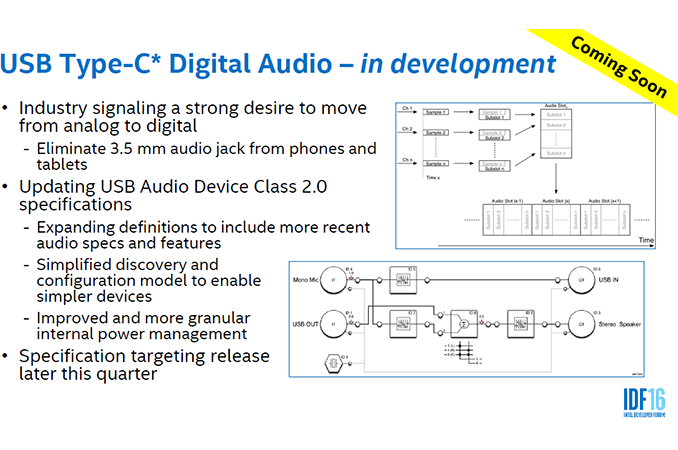
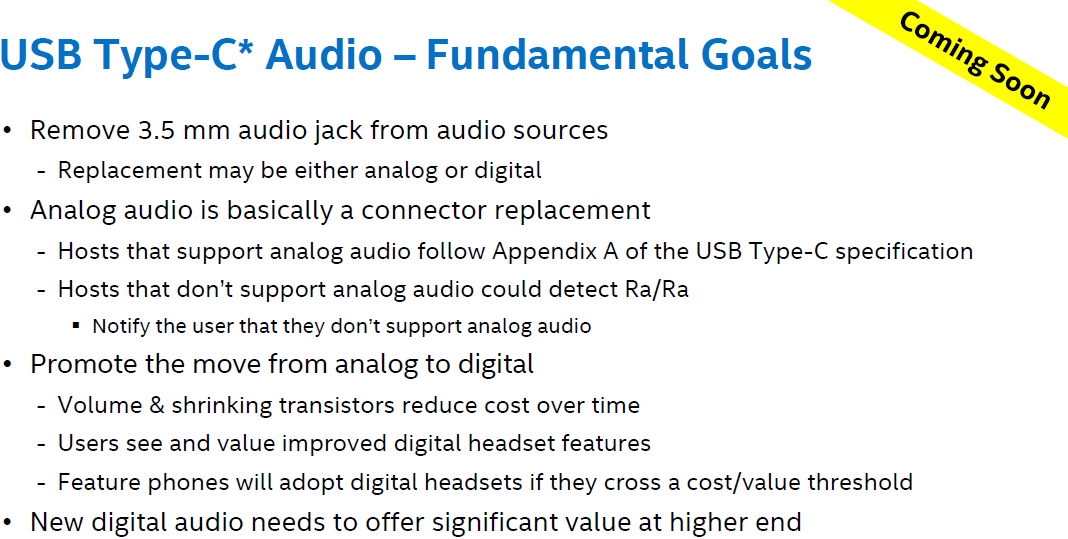








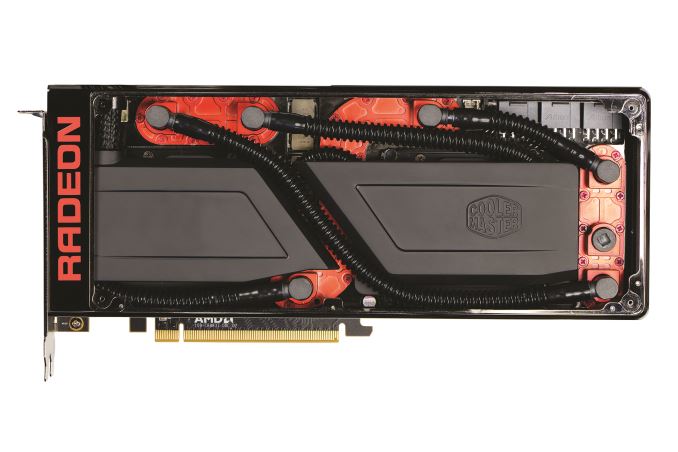
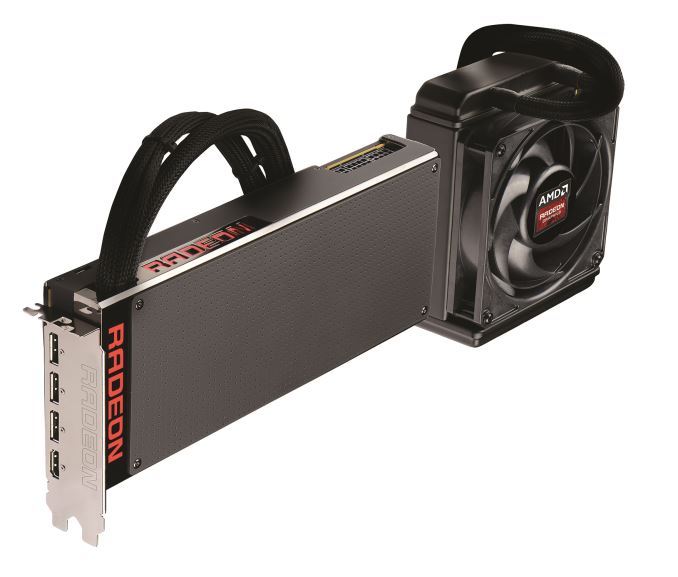







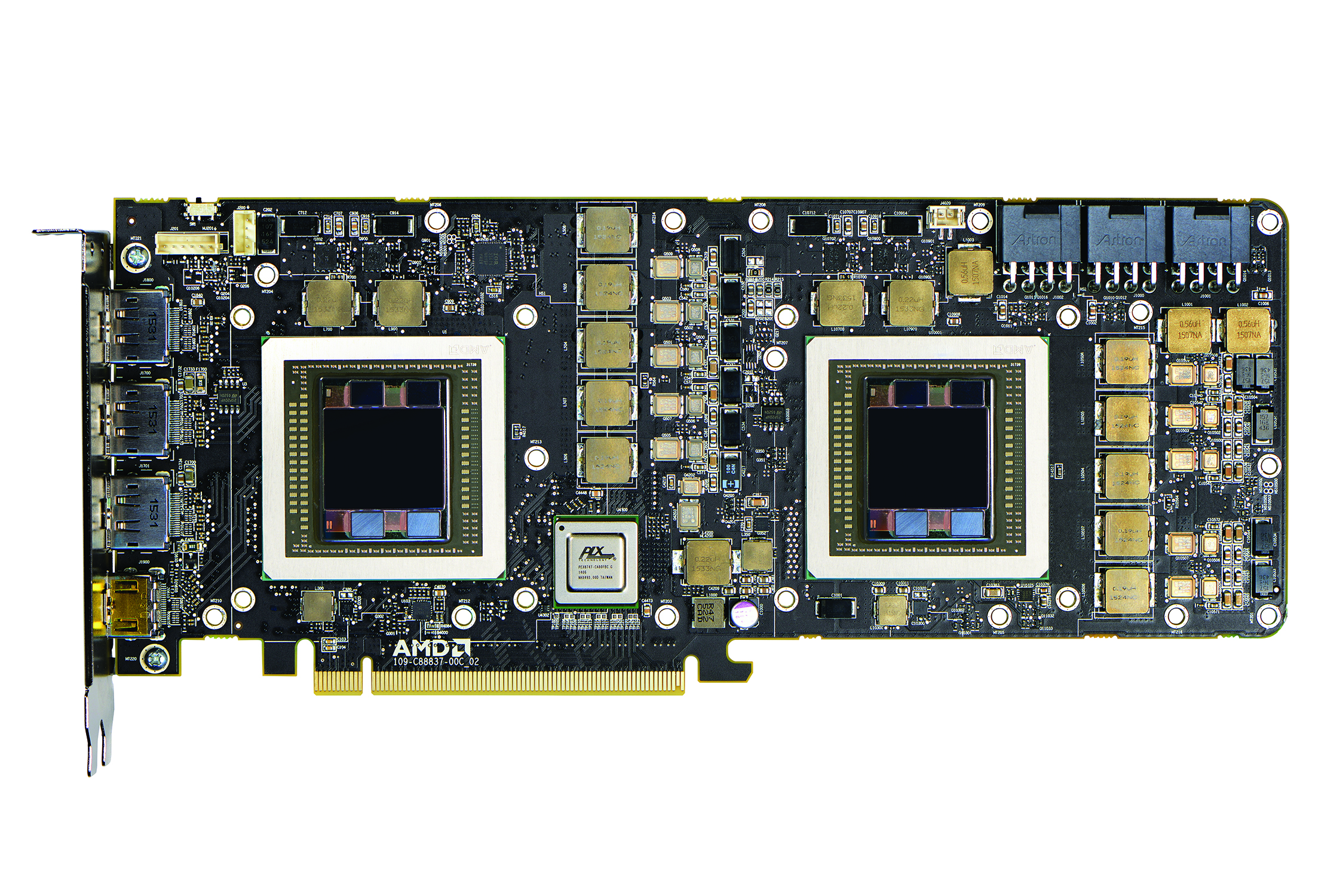







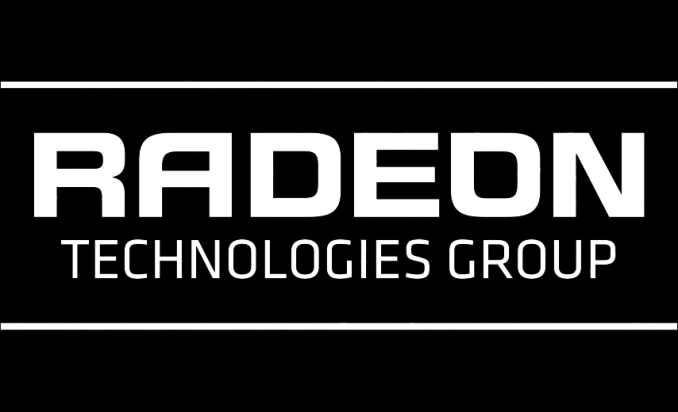
No comments:
Post a Comment